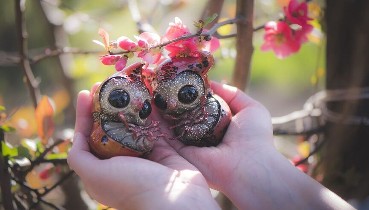

10+ Beautiful Transparent Animals That Are Hard To Believe Actually Exist
Check out these animals, although you’ll have to look closely. Why? Because they’re invisible! Well ok, maybe not, but they are transparent. Want to know why many of the animals featured below are sea-dwelling creatures? The answer is all about self-preservation.
As pointed out by Scientific American’s Sönke Johnsen, “almost all open ocean animals not otherwise protected by teeth, toxins, speed or small size have some degree of invisibility.”
#1 The Glasswinged Butterfly

Greta oto (glasswinged butterfly) is a brush-footed butterfly. The transparency of its wings results from the combination of three properties: first, from the low absorption of the visible light by the material constituting its wings, second, from the low scattering of the light passing through the wings and finally, from the low reflection of the light impinging on the wings surface. Adult glasswings can be found mostly from Central to South America as far south as Chile. They can migrate great distances and have been documented as far north as Mexico and Texas. (source: wikipedia)
#2 Transparent Juvenile Surgeonfish

This transparent fish is a juvenile Surgeonfish. They’re found in a wide range of waters including those around New Zealand. Believe it or not, it’s the same species of fish as Dory from Finding Nemo/Dory! They can grow up to 30cm (12 inches) long and are popular aquarium fish. (source: wikipedia)
#3 Juvenile Sharpear Enope Squid

This is a juvenile sharpear enope squid (Ancistrocheirus lesueurii). Its transparent body is covered with polka dots of pigment-filled cells, and below its eyes are bioluminescent organs. They may be found throughout the tropical and subtropical oceans, often at depths of between 200-1000 metres. (source: telegraph, wikipedia)
#4 Translucent Pharaoh Ants Eating Colored Liquids

The pharaoh ant (Monomorium pharaonis) is a small (2 mm) yellow or light brown, almost transparent ant notorious for being a major indoor nuisance pest, especially in hospitals.[1] The pharaoh ant, whose origins are unknown, has now been introduced to virtually every area of the world, including Europe, the Americas, Australasia and Southeast Asia. (source: wikipedia)
#5 Tortoise Shell Beetle

The tortoise shell beetle is not completely transparent, but it does have a carapace that is nearly invisible. The purpose of the transparent outer shell is to fool potential predators, as it reveals markings on its back that act as a warning. Tortoise beetles come in many different varieties, and the design under their clear shells can be distinct and beautiful. (source: mnn)
#6 Macropinna Microstoma

Macropinna microstoma is the only species of fish in the genus Macropinna, belonging to the Opisthoproctidae, the barreleye family. It is recognized for a highly unusual transparent, fluid-filled dome on its head, through which the lenses of its eyes can be seen. M. microstoma has been known to science since 1939, but is not known to have been photographed alive until 2004. Old drawings do not show the transparent dome, as it is usually destroyed when brought up from the depths. (source: wikipedia)
#7 European Eel

European Eels change colors several times throughout their lives. They start off transparent before turning brownish-yellow on their sides and belly. After 5–20 years in fresh or brackish water, the eels become sexually mature, their eyes grow larger, their flanks become silver, and their bellies white in color. In this stage, the eels are known as “silver eels.” (source: wikipedia)
#8 See-through Frog (Hyperolius Leucotaenius)

Hyperolius leucotaenius is a species of frog in the Hyperoliidae family. It is endemic to Democratic Republic of the Congo. At one time thought to be extinct, in 2011 Hyperolius leucotaenius was found and photographed on the banks of the Elila River, a tributary of the Lualaba, during an expedition led by Eli Greenbaum of the University of Texas El Paso. (source: wikipedia)
#9 A Juvenile Octopus

This juvenile octopus is just 2 centimetres wide, and its internal organs can be seen through its transparent body. This one was spotted at night in the deep water off the coast of Tahiti. The orange spots on its tentacles change color and are used for camouflage. (source: ibttimes)
#10 Transparent Butterfly

#11 Salpa Maggiore

This fish was caught off the Karikari peninsula on the north island of New Zealand. Experts believe it could be a Salpa maggiore (Salpa maxima), commonly found in the Southern Ocean. (source: metro)
#12 Transparent Immortal Jellyfish

Turritopsis dohrnii, otherwise known as the immortal jellyfish, is a species of small, biologically immortal jellyfish found in the Mediterranean Sea and in the waters of Japan. It is one of the known cases of animals capable of reverting completely to a sexually immature, colonial stage after having reached sexual maturity as a solitary individual. (source: wikipedia)
#13 Transparent Fish

#14 Juvenile Cowfish

#15 Glass Frog

The glass frogs (or glassfrogs) are frogs of the amphibian family Centrolenidae (order Anura). While the general background coloration of most glass frogs is primarily lime green, the abdominal skin of some members of this family is translucent. The internal viscera, including the heart, liver, and gastrointestinal tract, are visible through the skin, hence the common name. (source: wikipedia)
#16 Ghost Shrimp

Ghost shrimp is a name applied to at least three different kinds of crustacean: Thalassinidea, crustaceans which live in deep burrows in the intertidal zone’ Palaemonetes, small mostly transparent shrimp commonly sold for use in freshwater aquaria; and Caprellidae, amphipods with slender bodies more commonly known as “skeleton shrimps.” Ghost shrimp are sometimes targeted as prey even by fish smaller than them. (source: wikipedia)
#18 Deep Sea Anglerfish

The larvae of the Deep Sea Anglerfish has a transparent, almost jelly-like skin. It only gets its color when it grows up. That’s also when it develops the “lure” at the front of its head and the fang-like teeth that Anglerfish are famous for.
Recommended Videos
 The Abandoned Fishing Village of Houtouwan273 views
The Abandoned Fishing Village of Houtouwan273 views 30 Gym Memes for Maximum Gains924 views
30 Gym Memes for Maximum Gains924 views-
Advertisements
 The World-Famous Easter Island Heads Have Bodies Buried Underground1059 views
The World-Famous Easter Island Heads Have Bodies Buried Underground1059 views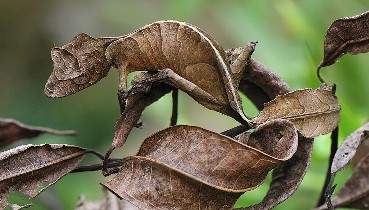 25 Unbelievable Examples of Animal Camouflage That Will Make You Look Twice973 views
25 Unbelievable Examples of Animal Camouflage That Will Make You Look Twice973 views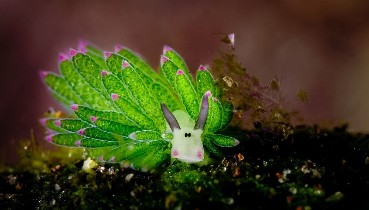 50 Animals That You Probably Haven’t Seen Before18373 views
50 Animals That You Probably Haven’t Seen Before18373 views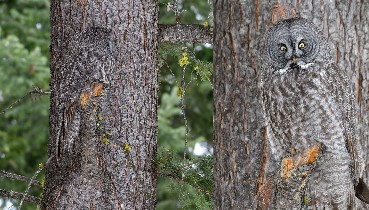 Photographer Spots Owl Perfectly Blending Into a Tree8430 views
Photographer Spots Owl Perfectly Blending Into a Tree8430 views The flame-faced tanager293 views
The flame-faced tanager293 views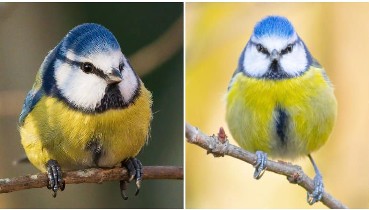 This Blue Tit Is A Stunning Featherly Flying Ball Of Nature713 views
This Blue Tit Is A Stunning Featherly Flying Ball Of Nature713 views


